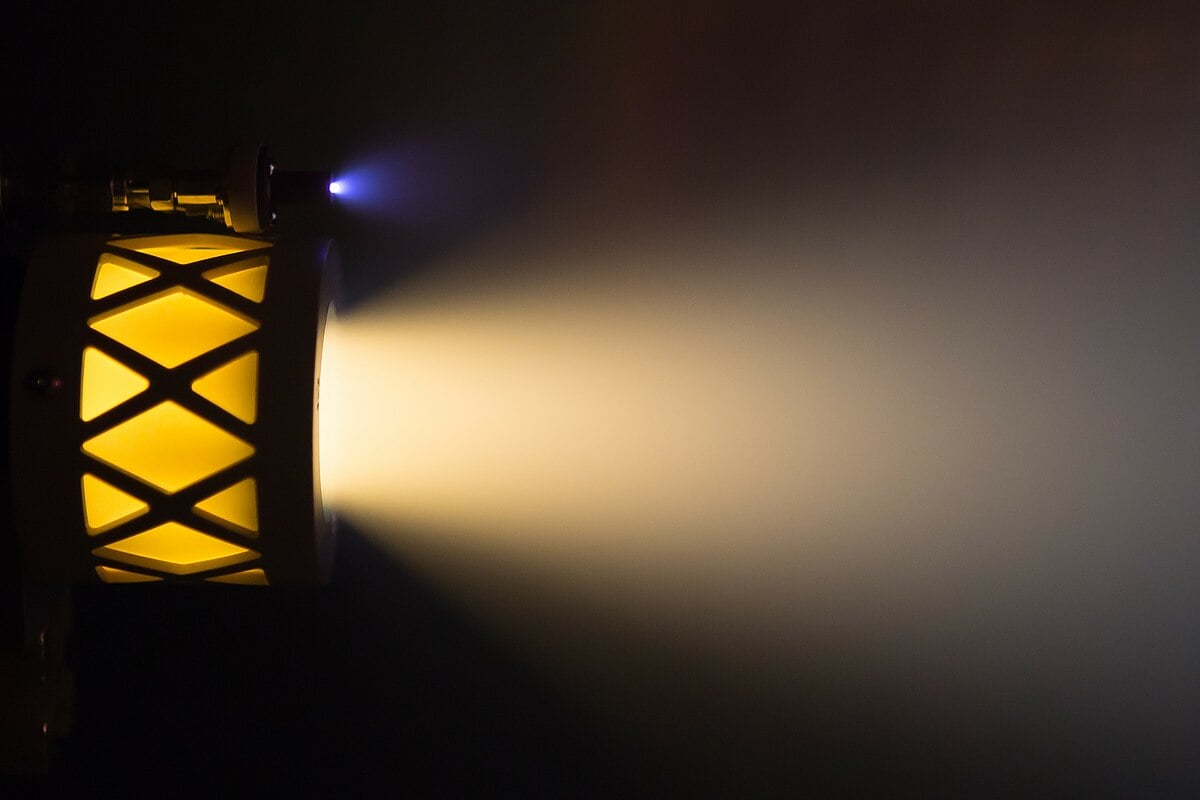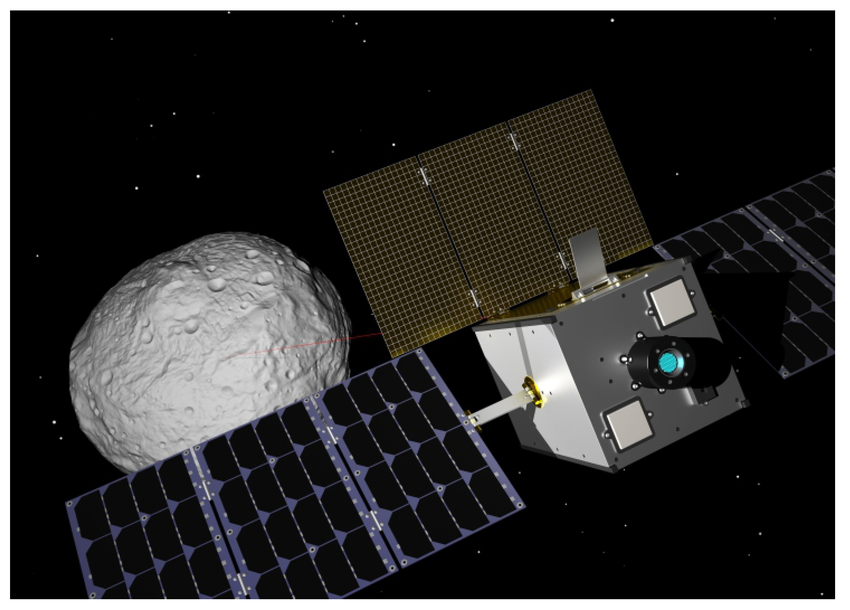In recent years, humanity has visited several near-Earth asteroids (NEAs), including Ryugu (Hayabusa2) and Didymos (DART). However, we will need more frequent missions to start gathering more helpful information about this class of over 37,000 space rocks. CubeSats have off-the-shelf components and a relatively small size, making them a potentially good candidate for such an exploration program. But how would they reach these asteroid locations given their relatively limited payload and propulsion capacity? That is the focus of a new paper from Alessandro Quarta of the University of Pisa. He looks at potential trajectory planning for CubeSats given one of several configurations of ion drives. He shows how many NEAs can be accessed by simply entering a heliocentric orbit and awaiting the asteroid's arrival as part of its orbit.
Most NEAs have elliptical orbits, meaning they will pass by a reference orbit twice during their orbit and a point called a nodal point. The underlying idea behind the paper is to try to position a CubeSat at the nodal point of an NEA as it crosses over the CubeSat's own orbit—essentially performing a flyby without having to use the fuel resources to catch up to the asteroid itself.
To reach those nodal points, the CubeSat will rely on a marvel of modern technology—the ion engine. Specifically, the paper analyzes the thrust characteristics of the BIT-3 RF Ion thruster from Busek, a company based in Massachusetts. It was originally the world's first iodine-fueled gridded ion thruster, released in 2016. Most importantly, its properties are well known and have been described in previous papers, making it easy to use as a baseline model.
 Image of the Busek BET-3 Ion drive.
Image of the Busek BET-3 Ion drive.
Credit - Credit - Wikimedia User Rocketscience14
One variable analyzed in the paper is the number of BIT-3 RF thrusters used in the system. Analysis found that while three engines could get the CubeSat to the rendezvous point faster, it did so with a tradeoff of requiring more mass, both in the form of the propellant and the engines themselves. Ultimately, that tradeoff diminished more from adding a third engine than from adding a second, as would be expected.
Mass is always a significant consideration on space flight operations, and Dr. Quarta didn't neglect the other parts of the spacecraft that propulsion engineers would usually rather ignore. He assigned 4kg to the scientific payload used to sense the asteroid, and around 40% of the CubeSat's mass to other systems, including power generation provided by a HaWK solar array from MMA.
However, the exciting part of the paper is trajectory optimization. Controls problems, like determining what trajectory to take to a given point in space, can have multiple answers depending on the desired outcomes and constraints. Adjusting the weight of the importance of different factors is key to any controls problem. Dr. Quarta uses a technique called Pontryagin's Maximum Principle to help determine solutions to the control problem he defined, which focuses on determining the "optimal guidance law" - essentially, where to point the thrusters and how hard to fire them. To numerically solve the problem, he uses another mathematical technique known as an Adams-Bashforth-Moulton solver, which provides actual numbers to the solutions of the issues he defined.
Fraser discusses the intricacies of ion engines.
With those numbers, Dr. Quarta solved 180 different optimal control thrust vector problems using either 1, 2, or 3 ion thrusters, for heliocentric orbits between .85 AU and 1.15 AU. Of the 37,000 known NEAs, 18,644 were identified as crossing somewhere within those orbits. In those constraints, 1,870 had both "ascending" and "descending" points. Dr. Quarta decided to analyze, in particular, 1685 Toro, whereby he analyzed a mission using three ion thrusters that would take about 150 days, or 5 months, to reach a point where a CubeSat could rendezvous with it, while only using about 8% of the CubeSat's mass in fuel.
Trajectory analysis is often the unsung hero of space missions, as it isn't as flashy as releasing a fast impactor that smashes an asteroid or scooping up a sample from that asteroid's surface. If everything goes right, a casual observer would never notice a mission's trajectory. However, it is critical to its success, and analysis such as this is one way the world of space exploration takes a step forward. While there aren't any missions planned currently that could take advantage of these trajectory plans, undoubtedly someday there will be, and our knowledge of asteroids, and therefore of the early solar system, will be better for it.
Learn More:
A Quarta -Preliminary Trajectory Analysis of CubeSats with Electric Thrusters in Nodal Flyby Missions for Asteroid Exploration
UT -CubeSat Propulsion Technologies are Taking Off
UT -The First Cubesat With a Hall-Effect Thruster has Gone to Space
UT -Multimode Propulsion Could Revolutionize How We Launch Things to Space
 Universe Today
Universe Today
